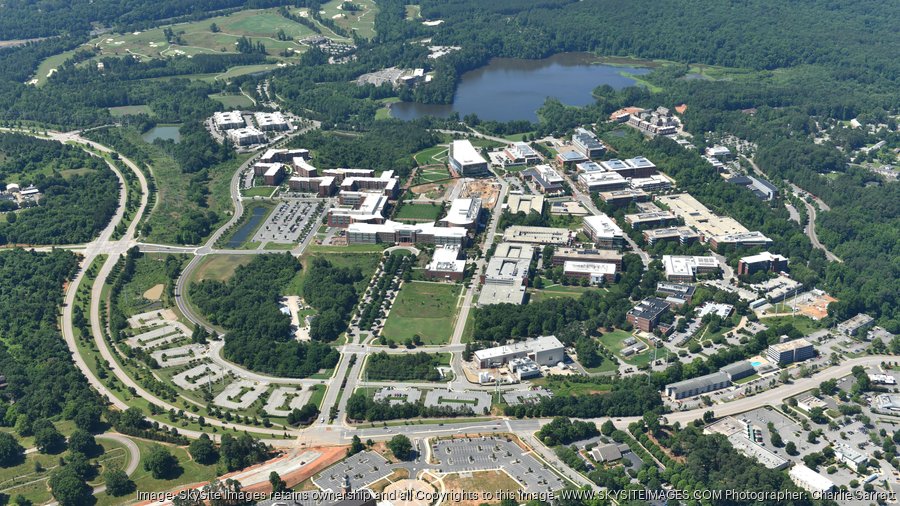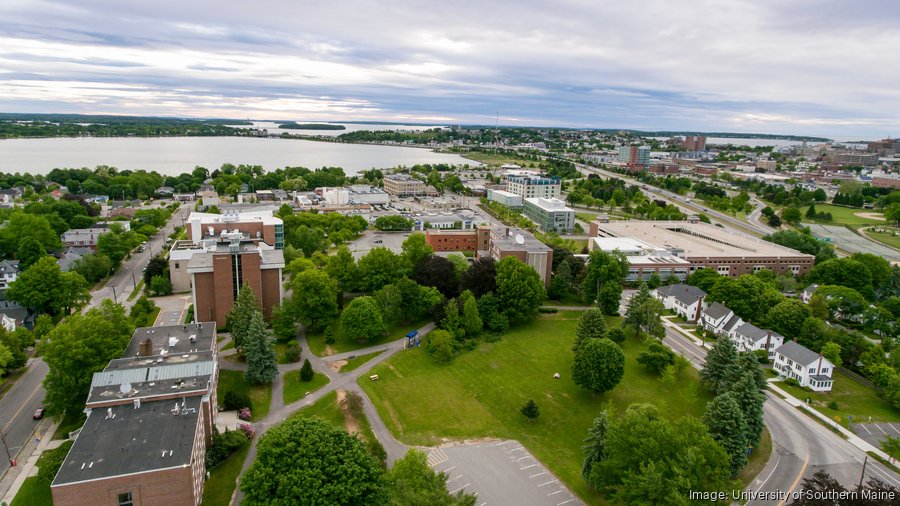After a quiet 2020, colleges and universities are starting to return to an increasingly popular option for development that mitigates overall risk and reduces upfront costs: public-private partnerships. Schools from University of Southern Maine to University of California Merced are once again turning to private developers for projects ranging from residence halls, dining facilities and student centers to powering campuses.
Developers who work with universities are reporting upticks in requests for proposals for P3 projects this year compared to 2020. Jessica Wood, an analyst with S&P Global, said in a recent interview that P3 projects in higher education aren’t going away and pointed to the “huge growth” in such projects over the past 5 to 10 years.
North Carolina State University in Raleigh, for example, recently struck a deal with Charlotte, North Carolina developer Lincoln Harris LLC and its financial partner, The Goldman Sachs Group Inc. in New York, to reimagine its Centennial Campus. Development of the site, entitled for up to 4 million square feet, is hoped to capitalize on the university’s robust technology and life-sciences programs, where start-ups can be fostered.
“Our goal here is to provide an area where those collision points between the public and the private sector occur,” said Johno Harris, president of Lincoln Harris.
Jay Pearlman, senior vice president of advisory services of Chicago-based The Scion Group LLC, works as a consultant on student-housing projects, including P3 deals, and said that partnering with a developer ensures speed to market and provides access to expertise that universities may otherwise lack.
“Institutions saw a reduction in both operating funding and visibility to capital investment (in 2020) … There is no free money but being able to harness another financing mechanism with external capital is very attractive to a lot of institutions right now,” Pearlman said.

University of Southern Maine, for its part, earlier this year broke ground on a student center and adjacent residence hall — the first student housing option on its Portland campus. The school is partnering with Birmingham, Alabama-based Capstone Development Partners LLC, a national student housing developer specializing in P3 arrangements, to bring expertise and knowledge the university did not have in-house.
Glenn Cummings, USM's president, said in an interview that the residence hall is meant to offer more affordable housing options to students who typically rent off-campus apartments in an increasingly expensive market. He added that the project paves the way for future developments using P3 models across the university system.
“We decided that we really wanted to work with the developer because the level of skills, the understanding of how to develop the project rapidly, the attraction of having a developer who knew where the supply chain was, was all very, very helpful,” Cummings said.
USM is applying $19 million in state bond funding to the cost of the $26.6 million Career and Student Success Center, and the $72.8 million, 580-bed residence hall will be funded with university revenue bonds. Revenue generated by the residence hall will fund annual debt-service payments.
Likewise, New Jersey Institute of Technology in Newark initially determined a public-private partnership would be the best delivery method for a new $95.3 million residence hall to avoid adding a debt obligation and to benefit from the expertise and efficiency of a national partner who would own and operate the facility, said NJIT senior vice president Andrew Christ.
However, the Covid-19 pandemic resulted in increased financing costs for student-housing projects, driving up the room rental rates to a point where NJIT realized it would be unaffordable for its students. NJIT decided to maintain the P3 relationship, and use the expertise of the national developer but enter into a master lease structure, Christ said. That enabled the financing to occur based on the credit rating of NJIT, saving millions of dollars in interest costs and maintaining affordability.
“We have considered expanding our campus residential capacity for several years as our enrollment has grown significantly,” Christ said.
NJIT reported total fall 2020 enrollment of 9,870 students, up 5.3% from five years earlier. Dallas-based RISE Residential Construction LP, which has done P3 deals with universities since 1995, worked with NJIT on its recent housing project.
Jeremy Doss, senior vice president at RISE who heads up P3 pursuits, said the pandemic presented unique challenges in getting the deal to closing and built. In hindsight, though, deciding to proceed on the project in the spring of 2020 likely offset extra costs plaguing projects today, as construction prices have shot up 20% since.
“Everybody else is getting off the fence right now,” Doss continued. “Some (projects) we’re passing on because we don’t want to spread ourselves too thin.”
A growing reliance
In the early days, public-partnership deals were typically pursued by middle-market schools — up to 10,000 students enrolled, Doss said. Today, it’s become an accepted, mainstream approach for institutions large and small, public and private. Higher-ed P3s have increased from $100 million across three transactions in 2003 to $3.1 billion in 28 deals in 2016, according to data from Ernest & Young LLP. EY says some experts believe that volume could reach $5 billion in the next five years.
Not only have the number of deals grown, the projects have also become more complex and expensive. A P3 deal at University of California Merced that wrapped last year totaled $1.3 billion alone.
Doss said developers frequently get creative in financing P3 deals, especially since the pandemic started. Developers like RISE come into a deal with a full team — architect, engineer, general contractor and so on — to assess realistic project costs and timeline. Private real-estate firms frequently must negotiate a longer ground lease than what’s generally offered by universities. Thirty years is typically the starting point but that’s oftentimes too restrictive, Doss said. Forty, 50, even 60 or 70 years is preferred.
The process of getting a P3 deal successfully to the finish line is typically protracted — and one that requires a lot of patience, Harris said.
“It’s a very different deal than going and buying a piece of land from another entity,” he said. “(N.C. State) lives and breathes Centennial Campus. They’re going to be there long past whatever we build. That brings in different dynamics than buying a piece of land and going vertical on something.”
Frequently, Doss said, RISE will leverage financial relationships it has with lenders to obtain long-term debt or will apply for state housing bonds to add to a project’s capital stack. Last year, some universities took a hit to their credit because of the pandemic, which made cost of capital more expensive for P3 deals.
Derrick Anderson, senior vice president of learning and engagement at Washington, D.C.-based American Council on Education, said the most successful P3 deals are synergistic between the university and developer. In the ACE's view, it's best if the process is initiated by the university and in the spirit of university advancement. rather than strictly out of need because of budget cuts. A partnership engaged under conditions of stress may put universities in a position to look at a project with only a short-term view, which is less optimal, Anderson said.
Chris Collins, vice president and senior analyst at Moody’s, said the pandemic exposed the fact that universities aren’t fully absolved of risk in P3 deals. Some schools assumed the costs of privatized student housing refunds in the spring of 2020; others actually purchased P3 projects last year.
The schools that supported the P3 projects on their campuses financially in 2020 outperformed projects that received no aid from the university, Wood said.
“One of the reasons why universities pursue this model is to achieve some element of risk transfer: construction risk, operational risk,” Collins said. “I think this underscored our overall view of P3 — the risk transfer is never complete with these deals because the university always retains some financial and reputational risks.”
More than housing
Moving forward, experts said that future higher-ed P3 projects will likely focus more on non-housing facilities and other “areas that people might have not paid as much attention to in the past," said Kasia Lundy, a managing director in EY-Parthenon's U.S. Education Strategy and Transactions team, in an interview with The Business Journals late last year.
“So, for example, public private partnerships in energy, thinking about how to either outsource there or partner with the private sector to make it much more efficient if you are creating or delivering your own energy,” Lundy said.
The Ohio State University in Columbus, Ohio, for example, is in a $1.1 billion energy P3 deal with an entity that includes French energy company ENGIE and Axium Infrastructure, a Canadian investment firm.
That entity, Ohio State Energy Partners, operates the systems that power, heat and cool Ohio State’s campus, under a 50-year lease of the university’s energy assets. The deal included a $1.015 billion upfront payment to the university, which annually pays OSEP a fixed fee (starting at $45 million, then escalating 1.5% each year), an operating fee (starting at $9.2 million) and a variable fee.
Ohio State is also employing a P3 model, worth $483 million, for its on-campus parking facilities. The university is working with Australian institutional investor QIC Global Infrastructure on that deal, which also includes a 50-year lease.
Want more real estate and/or higher-education news? Sign up for The National Observer: Real Estate Edition and The National Observer: Higher Education Edition.



